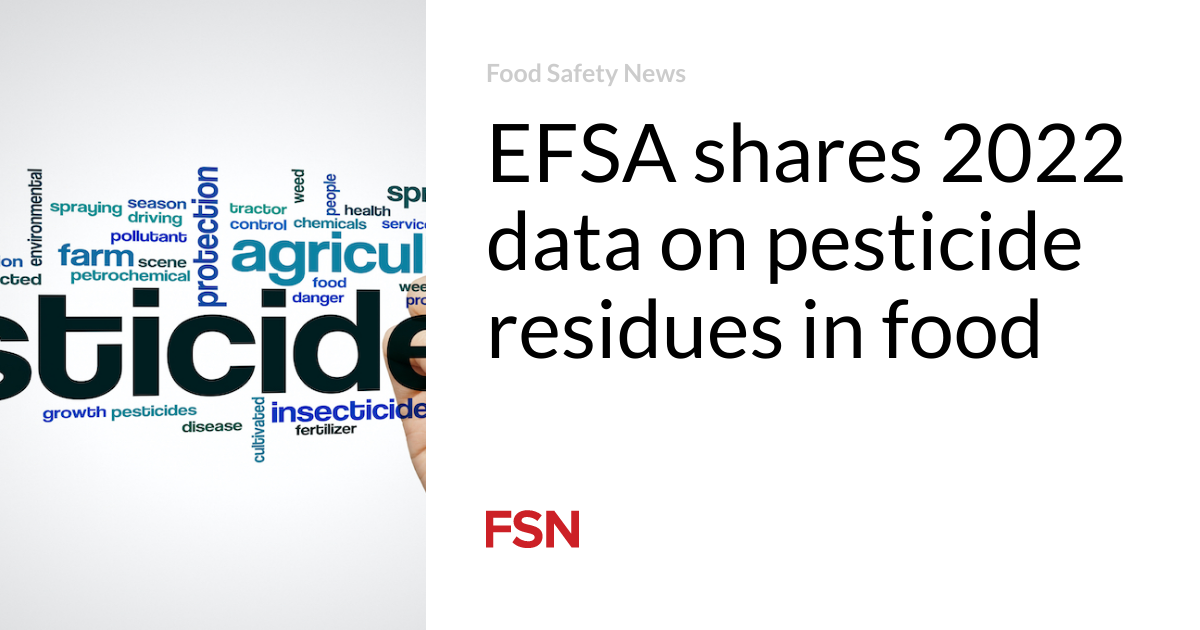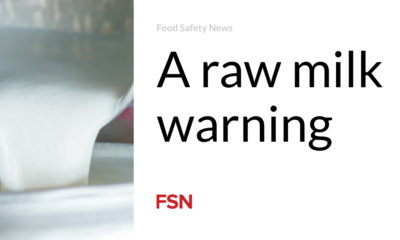Food
EFSA shares 2022 data on pesticide residues in food

Data showing the extent of pesticide residues on food has been published by the European Food Safety Authority (EFSA).
In 2022, 110,829 food samples were collected in the European Union. The results show that 96.3 percent were within legal levels. Of these, 65,374 samples contained no quantifiable residues, while 37.3 percent had residues not above limits.
A total of 4,148 exceeded the maximum residue level (MRL), of which 2,383 were non-compliant after taking into account measurement uncertainty and triggering legal sanctions or enforcement actions.
In 2021, 96.1 of the samples were within permitted levels. The MRL exceedance rate was 3.9 percent and the non-compliant rate was 2.5 percent, compared to 3.7 percent and 2.2 percent in 2022.
In 2022, MRL exceedances and non-compliance rates were four times higher in samples from non-EU countries than in food products grown in any of the reporting countries.
Pesticides with an MRL exceedance of more than 1 percent were copper compounds, ethylene oxide and chlordecone. A lower exceedance percentage was recorded for ethylene oxide from 2021, while the other two substances increased.
Results from 12 product groups
The 2022 report on pesticide residues in foodprepared by EFSA, provides an overview of official control work in the EU Member States, Iceland and Norway.
Of the 11,727 samples analyzed for 193 pesticide residues as part of the EU-coordinated monitoring programme, 98.4 percent remained within legal limits. This program randomly analyzes samples of twelve products every three years. For 2022, these were apples, strawberries, peaches, wine, lettuce, head cabbages, tomatoes, spinach, oat grains, barley grains, cow’s milk and pork fat.
Half of the samples were free of quantifiable residues. More than 5,500 of these contain one or more residues in concentrations lower than or equal to the MRLs. 192 samples had residues exceeding permitted levels, and 100 were non-compliant in terms of measurement uncertainty.
Non-EU approved substances were responsible for 75 percent of non-compliant samples taken randomly from non-EU countries and 50 percent of food products harvested in the EU.
The highest number of multiple residues was found in a tomato sample in which 16 different pesticides were quantified, followed by strawberries with 15 different pesticides and red wine with 14 pesticides. The tomato and wine samples were grown in the EU, but the strawberry sample had an unknown origin.
Ethylene oxide findings
Ethylene oxide is not approved at EU level. However, of the 2,026 samples in which the substance was analyzed, the MRL was exceeded 47 times. Of these, six were samples of turmeric from India, five of chili peppers from India and Uganda, five of peppercorns from India, Vietnam and Lebanon, and four samples of dried beans from India.
In their monitoring programmes, EFSA said national authorities should take into account ethylene oxide in turmeric, chillies, peppercorns and dried beans from non-EU countries, especially India.
The number of samples with multiple pesticide residues was 23 percent, down from 26.4 percent last year. As many as 43 different pesticides were reported in a sample of chili peppers in the form of paprika powder of unknown origin.
In organic agriculture, MRL exceedances and non-compliances were at the same level as in 2021, with 2.4 percent exceedances and a non-compliance rate of 1.4 percent. Unauthorized substances were sporadically found in samples. An example was chlorpyrifos, especially in the dry beans, rice and cumin seeds of India.
The MRL was exceeded in 75 baby food samples. When measurement uncertainty was taken into account, 15 led to non-compliant results. MRLs were exceeded in 46 honey samples, of which 28 were assessed as non-compliant.
The results of the monitoring programs provide a source of information for estimating the dietary exposure of EU consumers to pesticide residues.
EFSA carried out a nutritional risk assessment as part of its analysis of the results. This showed the likelihood that consumers will be exposed to an amount of residual substances above a certain safety threshold. The EFSA concluded that there was a low risk to public health due to the estimated exposure to pesticide residues in the tested foods.
(To sign up for a free subscription to Food Safety News, click here.)











